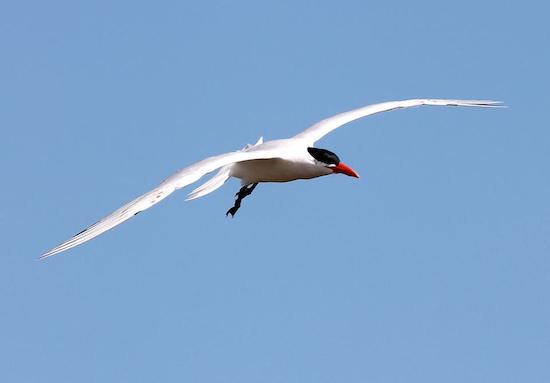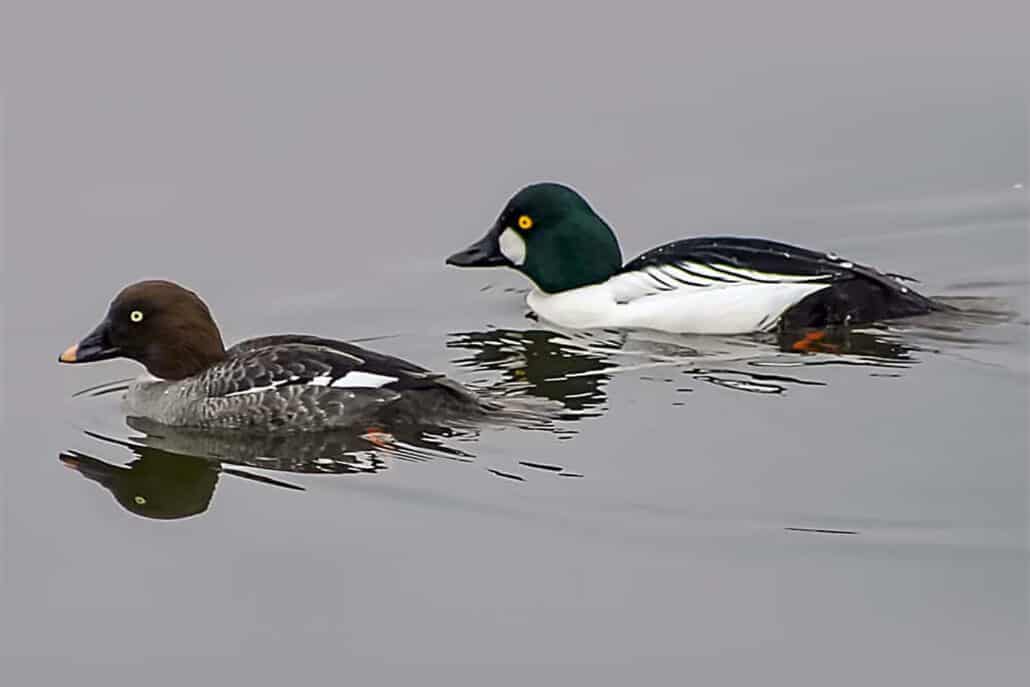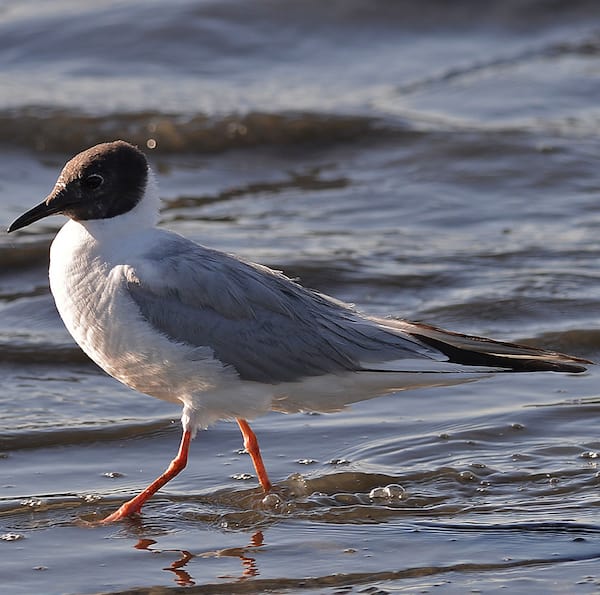The gull-sized Caspian tern is no wallflower, and as befits its character, the bird is not shy about shouting out to the world. Around water bodies, listen for a harsh croaking yip a bit reminiscent of an upset terrier, sometimes stretched to a longer, drawn-out jee-arrrr!. Melodic these are not.
The carrying power of Caspian tern calls is impressive, and you’ll often hear the bird before you see it. Look in the direction of the raucous calls, and before long you’ll see a bird with somewhat labored rowing strokes, looking every bit the match of a ring-billed gull in the size department. The black cap and downward-pointing, large red bill will soon become obvious.
When and Where to Look
Given how widely distributed and common Caspian terns are in North America, you generally don’t have to go far to see them. Many breeding colonies are well known, and if you visit one that is viewable, you’ll be assured hours of fascinating tern-watching. Migrants can turn up anywhere, especially east of the Mississippi River, and can be expected along any large river or lake. Harbors and shorelines along the Great Lakes are especially good places to find migrants.
The migratory peaks across much of North America tend to be April and May, and August and September. Many southbound adults are closely attended by juveniles, which are evident by their scalloped brownish back.
Caspian terns are common in winter along southern U.S. coasts, and it is an educational experience to see them loafing in mixed flocks with other tern species. Florida, Texas, and southern California offer wintertime birders plenty of Caspians.
Feeding Behavior
Watching Caspian terns feed is always entertaining. Like black-and-white avian kamikazes, they barrel into the water from as high as 90 feet, but usually from much lower. Hunting terns tend to trace languid circles, carefully watching the water’s surface. When a bird spots potential prey, it tucks its wings and drops like a rock, often completely submerging.
Caspians are generalists in regard to prey, typically capturing whatever the most frequent and available fish species is. They prefer morsels in the two- to five-inch range, although ambitious individuals will attempt to choke down larger prey. Rarely, Caspians will forage on shrimp, crayfish, and other crustaceans-and sometimes even earthworms.
Listen to a Caspian Tern:




